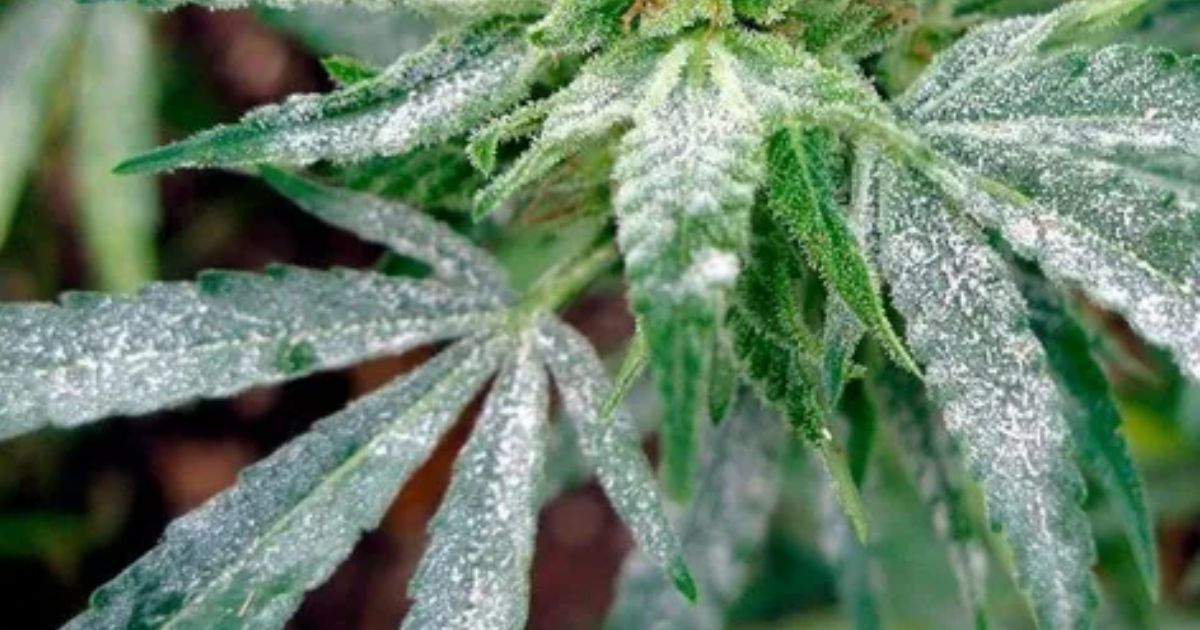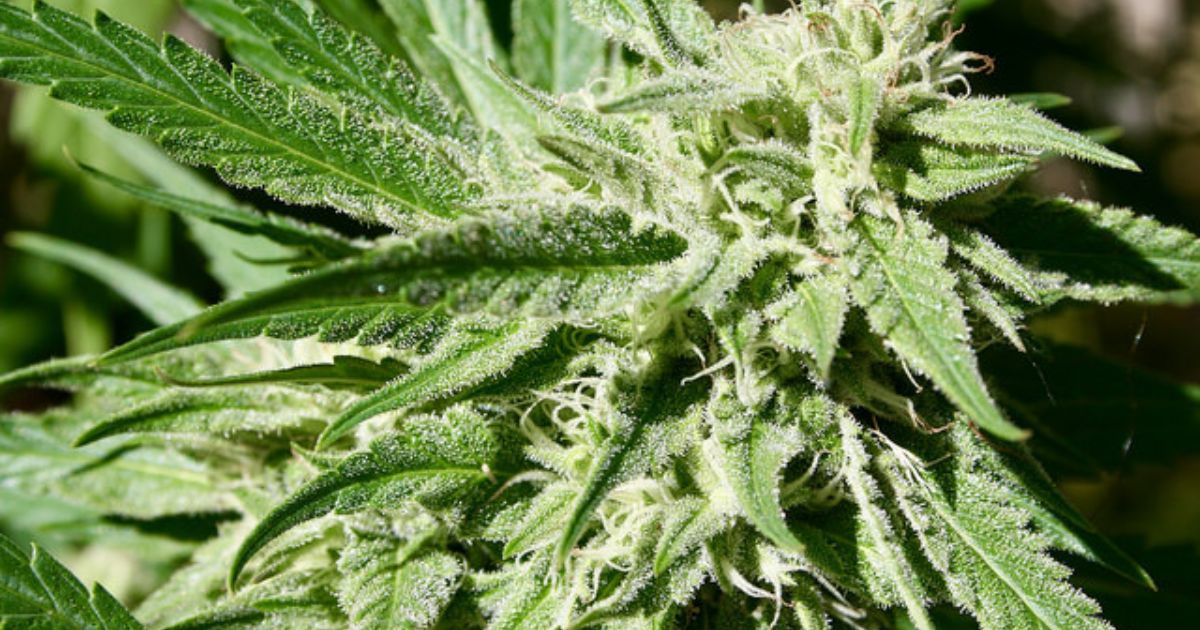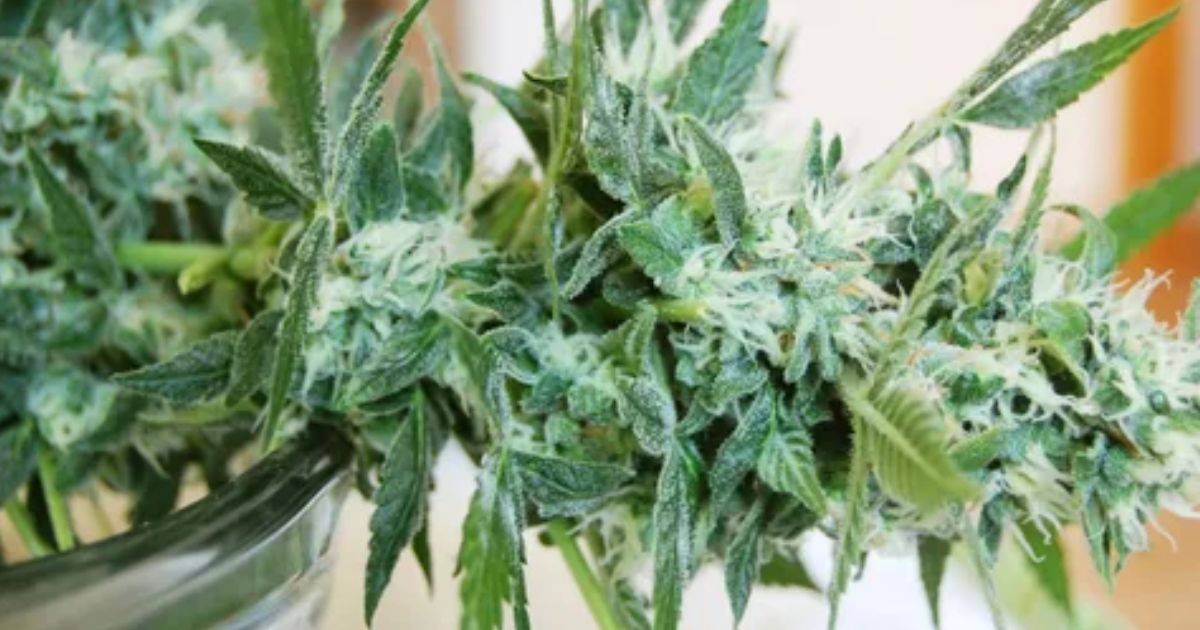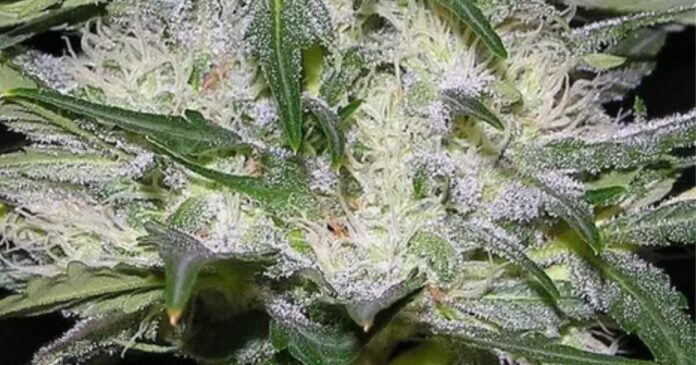White spots on cannabis plant can be alarming for any grower. While some minor discolourations are harmless, most white spots signal stress, pests, or disease that can affect your plant’s health, yield, and potency. Early detection is key. The sooner you identify the cause, the easier it is to treat the problem and prevent it from spreading.
In this guide, we’ll explore the common reasons why white spots appear on cannabis plants, show you how to diagnose the issue accurately, and provide practical solutions and prevention strategies. Whether you’re growing indoors or outdoors, understanding these signs will help you maintain vigorous, healthy plants and achieve a successful harvest.
Common Causes of White Spots
White spots aren’t random; they’re often symptoms of specific problems. The evidence points to powdery mildew as the top culprit, affecting up to 10-20% of indoor grows according to extension services like those from the University of California. Pests like spider mites or whiteflies follow closely, while nutrient imbalances or environmental factors play supporting roles.
Powdery Mildew: The Fungal Foe
Powdery mildew, caused by fungi like Golovinomyces spp., thrives in humid, poorly ventilated spaces. Cannabis white mold It appears as white, powdery spots that spread rapidly, potentially reducing photosynthesis by 50% if unchecked.
Pest Infestations: Tiny Invaders

Insects such as spider mites create stippled white dots via feeding damage, while whiteflies leave honeydew residues that foster sooty mould, mimicking white patches.
Nutrient and Environmental Issues
Deficiencies in calcium or magnesium can cause white spotting, which is often confused with diseases. High humidity or salt buildup from over-fertilisation exacerbates this.
Step-by-Step Identification
Use a magnifying glass or an app like iNaturalist for close inspection. Compare against reliable resources from cannabis extension programs.White powder on cannabis buds
Prevention and Treatment Strategies
Maintain 40-50% humidity, ensure proper airflow, and use neem oil for organic purposes. For severe cases, fungicides like sulfur-based products work, but rotate to avoid resistance.
In-Depth Survey Note on White Spots in Cannabis Cultivation
Cannabis cultivation has surged with legalisation in regions like Canada and parts of the U.S., but challenges like white spots remain persistent. Drawing from agricultural extensions, peer-reviewed studies, and grower forums, this section delves into the nuances. White spots affect Cannabis sativa across growth stages, from vegetative to flowering, with indoor grows being more prone due to controlled but stagnant environments. White Cherry Gelato THCa Flower Cannabis pest infestation According to a 2022 study in the Journal of Plant Pathology, fungal issues account for 60% of leaf spot reports in cannabis.
Understanding Powdery Mildew in Detail
Powdery mildew isn’t mildew in the downy sense; it’s an obligate parasite requiring living host tissue. Spores germinate in 60-80°F temperatures with relative humidity above 50%, spreading via air currents. Initial signs: minor, circular white spots on upper leaf surfaces, expanding to cover entire leaves in 7-10 days.
- Microscopic Identification: Under 10x magnification, look for chain-like conidia (spores). DNA testing via kits from labs like those offered by the American Phytopathological Society confirms species.
- Differential Diagnosis: Unlike downy mildew (yellowing undersides), powdery mildew is superficial and wipes off easily at first.
- Impact on Yield: Research from Purdue University indicates a 20-30% THC reduction in infected buds due to stressed trichomes.
- Regional Variations: In humid climates like the Pacific Northwest, hempushpa syrup uses in hindi incidence rises; arid areas see less, per USDA reports.
Treatment protocols: First, cultural controls prune affected parts and dispose of them in sealed bags to avoid spore release. Biological agents like Bacillus subtilis (found in Serenade ASO) suppress growth by 70-80%, per field trials. Cannabis trichomes Chemical options include myclobutanil, but the evidence suggests resistance buildup, leading organic growers to favour potassium bicarbonate sprays (1 tbsp/gallon water). Apply at first sign, repeating every 7 days. Controversy: Synthetic fungicides are banned in organic certification, White Widow Strain: The Legendary Cannabis Classic sparking debates on efficacy versus safety. EPA data shows low residue risks, but consumer advocacy groups like Project CBD highlight potential health concerns.
Pest-Related White Spots: Beyond the Obvious

Pests cause indirect white spotting through damage or excretions. Spider mites (Tetranychus urticae), microscopic arachnids, puncture cells, leaving white stipples that coalesce into bronzing.
| Pest Type | Symptoms | Identification Tips | Common Habitats |
|---|---|---|---|
| Spider Mites | Fine white dots, webbing on undersides | Shake leaf over white paper; mites fall as specks | Dry, warm conditions (70-80°F) |
| Whiteflies | Sticky honeydew, white flies when disturbed | Yellow sticky traps capture adults | Greenhouses, indoor setups |
| Aphids | Curled leaves, white cast skins | Clusters on new growth | Over-fertilized plants |
| Thrips | Silvery streaks turning white | Blue sticky traps; rasping damage | Outdoor winds carry them |
- Life Cycles and Spread: Spider mites reproduce every 5-7 days in heat, leading to explosive populations.. UC IPM reports a 10x increase in untreated crops.
- Natural Predators: Introduce ladybugs or predatory mites (Phytoseiulus persimilis), reducing infestations by 90% in studies from the Journal of Economic Entomology.
- Chemical Controls: Insecticidal soaps suffocate pests, and miticides like abamectin are used for severe cases. Organic debate: Neem oil disrupts hormones but may affect beneficial insects, per entomology reviews.
- Monitoring Tools: Use a 30x jeweller’s loupe; White Truffles Strain: The Gourmet Cannabis Experience apps like Leafly’s pest identifier cross-reference photos.
Nutrient Deficiencies and Environmental Factors
White spots from nutrients often mimic diseases. Calcium deficiency (blossom end rot equivalent) causes interveinal spotting in new leaves.
| Nutrient | Deficiency Symptoms | Causes | Corrections |
|---|---|---|---|
| Calcium | White/tan spots on young leaves | Low pH soil (<6.0), excess potassium | Foliar calcium sprays (e.g., Cal-Mag) |
| Magnesium | Interveinal chlorosis with white edges | High light intensity, acidic media | Epsom salt drench (1 tsp/gallon) |
| Iron | White new growth | Alkaline pH (>7.0) | Chelated iron supplements |
| Salt Buildup | Marginal white burns | Over-fertilization | Flush with pH-balanced water |
Soil tests from labs like those at Colorado State University reveal imbalances aim for EC 1.2-2.0 mS/cm. Environmental: High UV or wind scorch can leave white marks; LED grow lights can cause photo-oxidation if too close (under 12 inches).
Advanced Diagnostic Techniques
For precision, employ:
- ELISA Kits: Detect fungal proteins, available from Agdia for $200-300.
- Microbial Analysis: Send samples to labs; a 2023 Frontiers in Plant Science paper used metagenomics to differentiate fungi from bacteria.
- Grower Apps: Plantix AI scans photos with an accuracy of 85%, according to developer claims.
- Histological Exam: Sectioning leaves shows mycelium threads in mildew.
Controversies in diagnosis: Home tests vs. Why Are My Weed Plants’ Leaves Turning Yellow lab tests, with forums like Reddit’s r/microgrowery debating false positives, and pros advising multiple confirmations.
Prevention Strategies: Building Resilience
Prevention beats cure, reducing incidents by 50-70% per extension guidelines.
- Environmental Controls: Fans for air circulation; Cannabis spider mites dehumidifiers to keep RH 40-50%. VPD (vapour pressure deficit) charts from Royal Queen Seeds guide optimal 1.0-1.5 kPa.
- Sanitation: Sterilise tools with 10% bleach; quarantine new clones.
- Resistant Strains: Varieties like Durban Poison show tolerance and are bred by seed banks like Sensi Seeds.
- IPM Framework: Scout weekly; rotate neem, How to Identify the Effects of Hawaiian Haze Strain insecticidal soap, and beneficials.
- Nutrition Management: Use balanced fertilisers like General Hydroponics Flora series; monitor pH 5.8-6.5 hydro, 6.2-7.0 soil.
Case Study: A 2021 Oregon State University report on a commercial grow found that early PM detection via drones with multispectral cameras saved 40% of the harvest.
Treatment Protocols and Recovery

For infected plants:
- Isolate affected areas.
- Remove spots with pruning shears dipped in alcohol.
- Apply treatments: Milk spray (1:9 water) for mild PM, stresscom capsule uses in hindi antifungal per label.
- Monitor recovery: New growth should be spot-free in 2 weeks.
- Harvest considerations: Infected buds may need discarding; test for contaminants.
Long-term: Soil amendments with compost teas boost microbes, per Rodale Institute organic studies.
Conclusion
White spots on cannabis plants are a common issue, but they don’t have to ruin your grow. By understanding the possible causes, from powdery mildew and pests to nutrient deficiencies and environmental stress, you can quickly identify the problem and take effective action. To safeguard your health, early discovery, accurate diagnosis, and prompt treatment are crucial. Cannabis powdery mildew health and maximise yield.
Consistent monitoring, maintaining optimal growing conditions, and using preventive measures like proper airflow, balanced nutrients, and natural pest control will keep your cannabis plants strong and thriving. Healthy leaves lead to healthy buds, ensuring a successful and rewarding harvest.
FAQ
Can white spots affect bud quality?
Yes. If caused by pests or powdery mildew, white spots can reduce bud potency, aroma, and overall yield. Early treatment helps minimise damage.
Are organic treatments effective for white spots?
Yes. Organic solutions like neem oil, insecticidal soaps, and natural fungicides can control pests and mildew while keeping your plants safe for consumption.
How do I know if white spots are from pests or disease?
Inspect leaves closely. A powdery white covering is the appearance of powdery mildew. While pests leave tiny specks, bite marks, or webbing. Magnifying tools can help identify insects.
Can nutrient deficiencies cause white spots?
Yes. Deficiencies in calcium, magnesium, or other minerals can lead to pale, white, or speckled patches on leaves. Soil testing and proper fertilisation can fix this.
How quickly should I act when I see white spots?
Immediate action is essential. Early intervention prevents the problem from spreading. This lowers the possibility that your plants will sustain serious harm.
Can environmental stress cause white spots?
Yes. Excessive light, heat, or humidity fluctuations can bleach leaves or cause white patches. Adjusting light distance, temperature, and airflow often resolves the issue.




